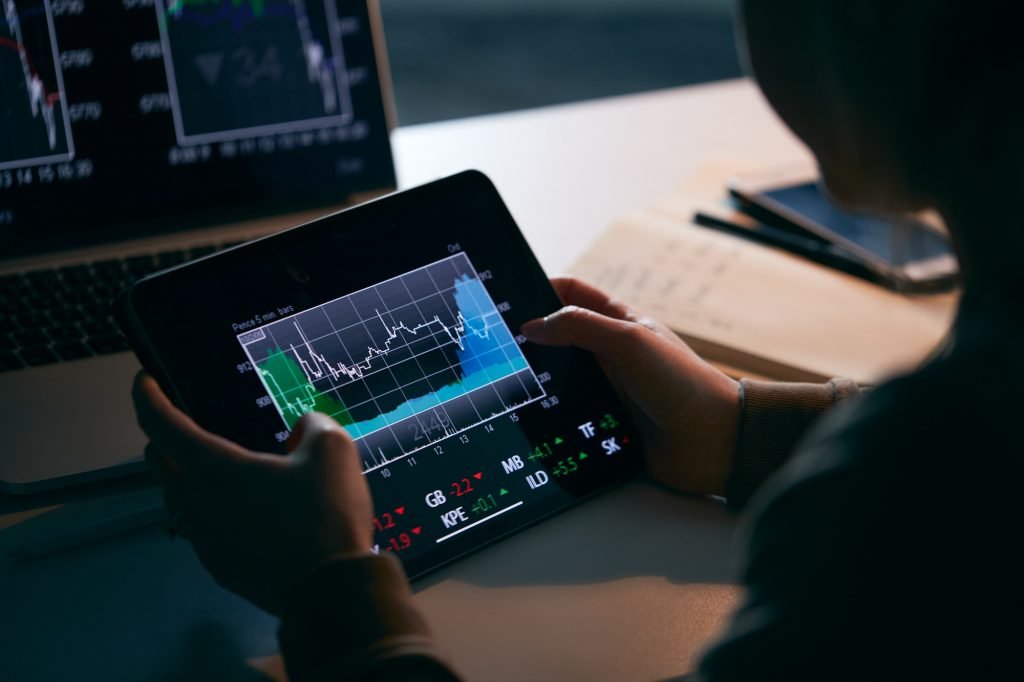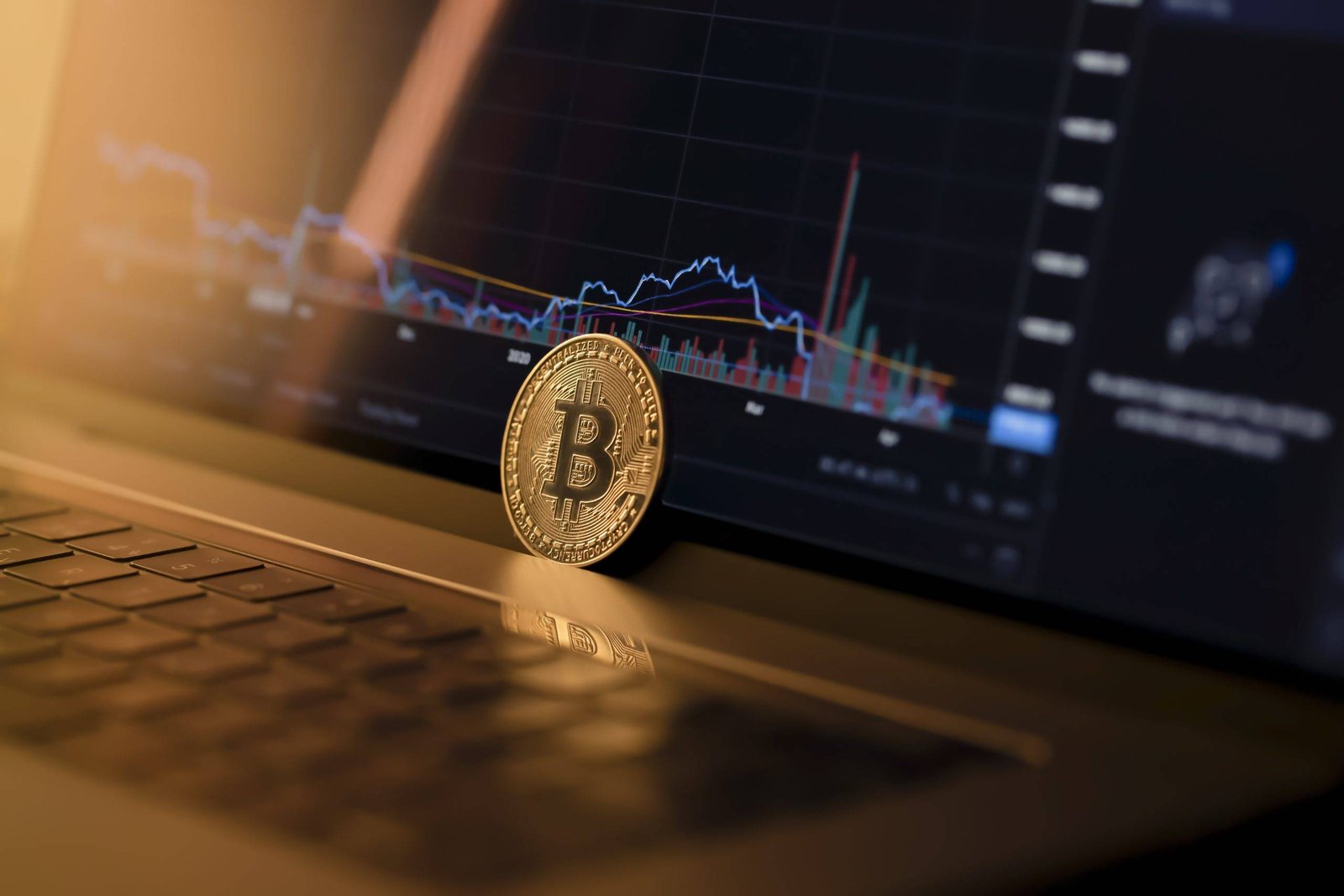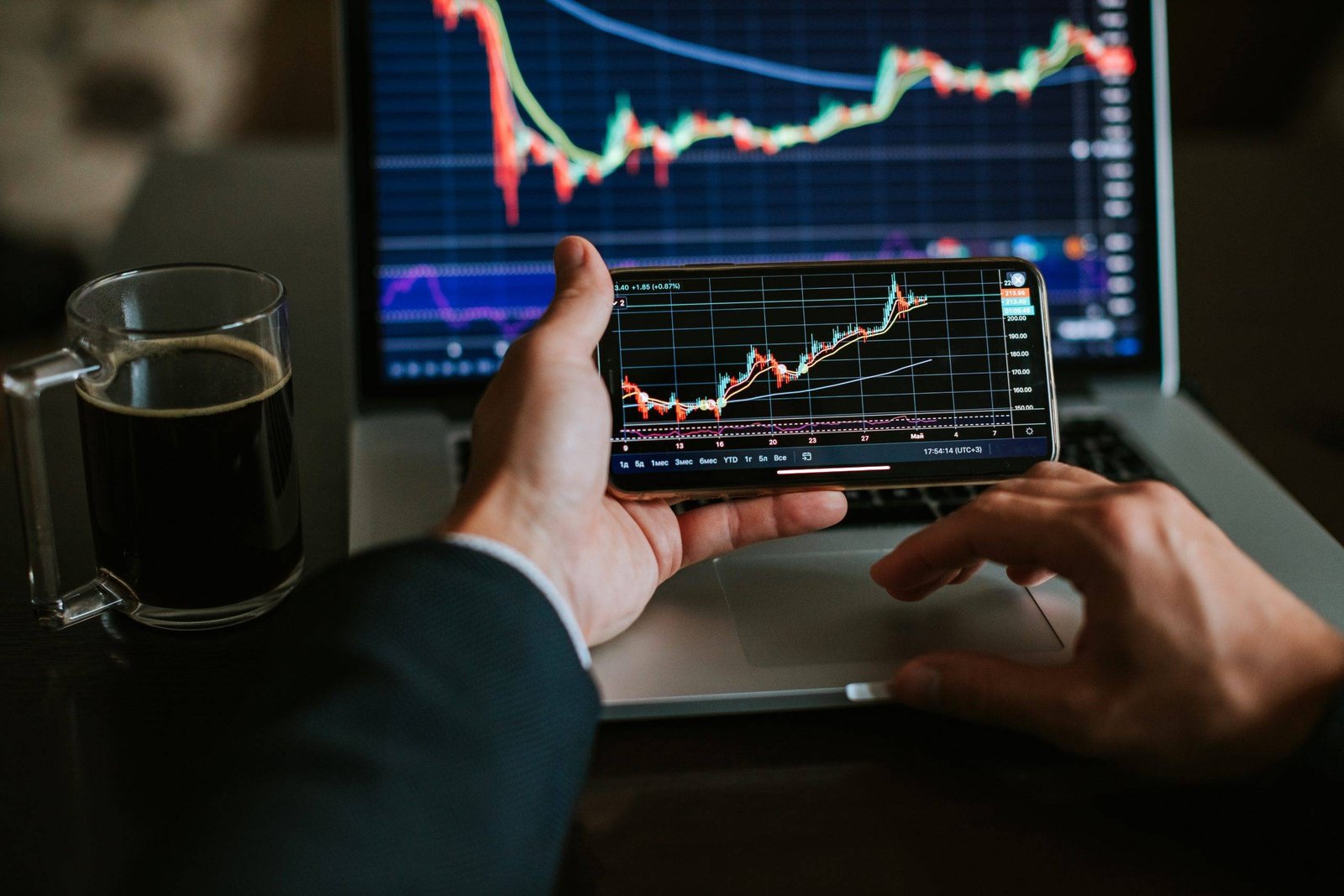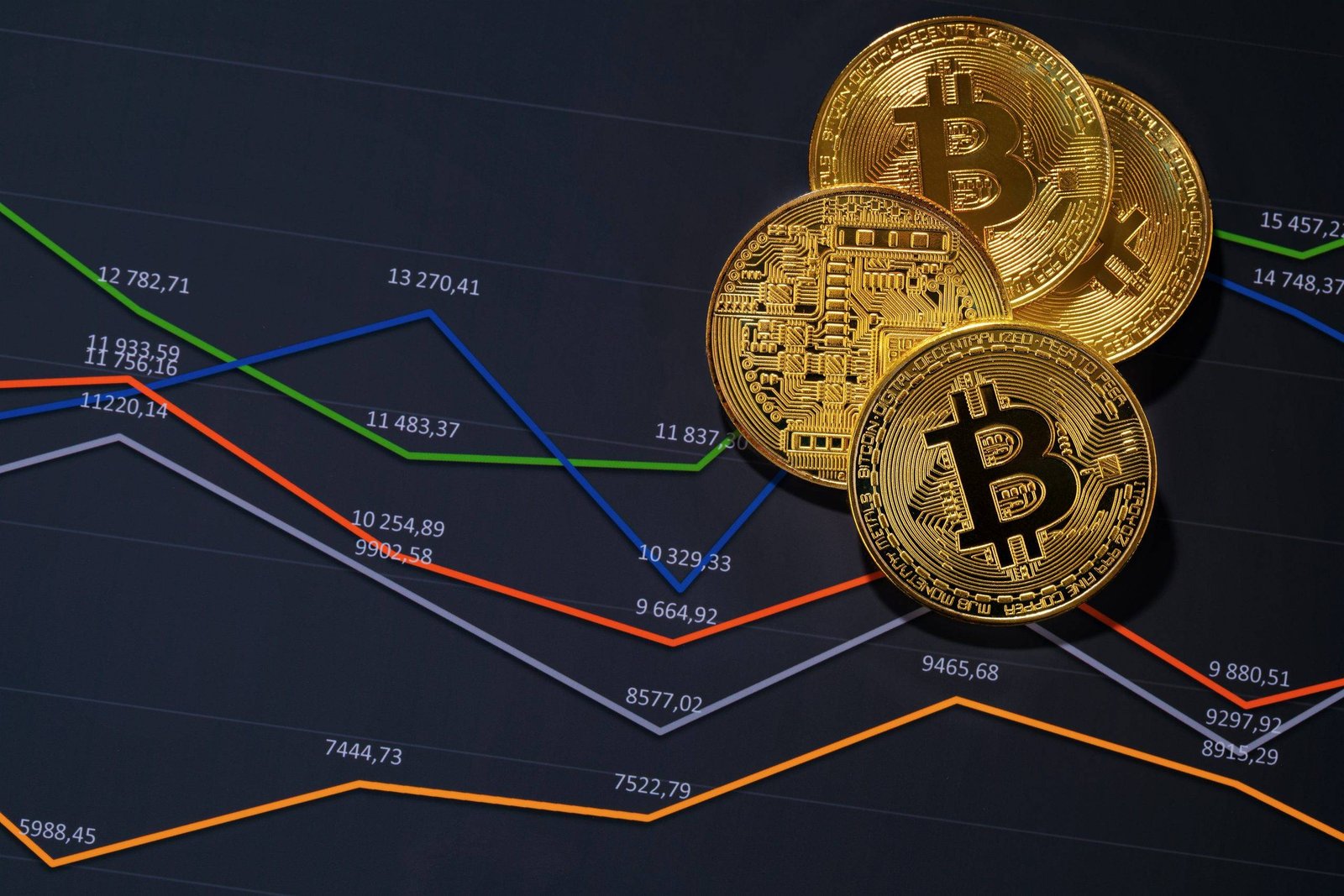
Advance Course
Infinite Trading Academy (ITA) is the award-winning best share market classes in Pune where you can learn basic and advanced courses in online & offline mode. Our modules are recently updated and designed by our team of experienced traders & managers who had a hands-on experience to create this amazing course.
The Advanced Trading Course is designed to provide the advanced traders with a better understanding of all aspects of the market, from technical analysis and fundamental analysis, to risk management and carry trading. The Advanced course covers over 10 modules in total which help you understand the world of trading better. Topics are Advance Price Action, Intraday Demand and Supply Analysis, Big player/ Smart Money foot Print reading, Intraday Currency Future and Option trading, Intraday Commodity Future and Option Trading, Intraday Stock Future and Option Trading, Nifty and bank nifty Intraday option buying trade setup, Advance Option chain and option Greeks Analysis, Option selling Straddle, Strangle and Iron Condor Strategy, Option positional Trade setup
Get In Touch
ADVANCE COURSE MODULES
Price action is the movement of a security’s price plotted over time. Price action forms the basis for all technical analysis of a stock, commodity, or other asset charts. Many short-term traders rely exclusively on price action and the formations and trends extrapolated from it to make trading decisions. Technical analysis as a practice is a derivative of price action since it uses past prices in calculations that can be used to inform trading decisions. We have developed to trade price action effectively without wasting your time. The infinite trading academy teaches you price action strategy effectively.
The following are three things you need to understand about pricing strategies.
- Price formation with respect to important data points
- Demand and Supply analysis in Multi timeframe
- Trend confirmation and trade setup for swing trade
- Logical entry and exit
- Higher Risk reward trade
Stock markets are the most volatile ones as they come across several fluctuations. These lead to changing trends that are generally transient in unstable markets. These fluctuations have a great impact on the values of the stock market and should be analyzed properly in order to achieve success.
By studying technical analysis, one can help investors by suggesting when and where to invest their money to get better profits. An individual can be successful as an analyst in volatile markets only if s/he follows certain fundamental charts, volumes, and price scales that can set a trend in the market. These charts are simple ways to show entries and exits of stock values in the market along with the current situation
Technical analysis is a form of analysis that uses mathematical and statistical tools to predict future market movements.
It is used to determine the trend of a specific market by using historical data and information about the current situation in the stock market.
Technical analysis can be considered one of the most important and basic share market courses that allows an individual to study the variations of demand and supply that take place in the market.
Therefore, the need for some experts in the fields is found increasing thus giving scope to share market courses, particularly technical analysis. The technical analysis could be considered as the major and also a basic share market course that allows an individual to study the variations of demand and supply that takes place in the market. This specific share market course study helps an individual to know and understand the stock market in detail. The infinite trading academy provides you with the analysis of the supply and demands of intraday trading.
Footprint charts are a type of candlestick chart that provides additional information, such as trade volume and order flow, in addition to the price. It is multi-dimensional in nature and can provide an investor with more information for analysis, beyond just the security’s price.
A footprint chart is similar to a candlestick chart, but it adds another dimension by showing you how much money moved into or out of a stock during a certain period of time. This makes it easier to see how the market behaves when there is an event like a dividend payment or when a company announces that it is going public. The more activity that happens around these events, the higher these stocks will move up on the price ladder.
The footprint also helps you determine whether there are any trends at work in your portfolio that might be affecting your investment decisions. You can use this information to make changes if necessary so you don’t miss out on any opportunities for growth or profit!
In the footprint chart, we see both volume and open interest (the number of open positions) for each time period. We can see how many shares were traded during that time period and how many contracts (or shares) were bought/sold during that period. These metrics provide us with a better understanding of how much activity is happening within the market at any given moment.
A footprint chart can be a great way to get more information about security. The format looks like a candlestick chart, but it’s different from other types in that it provides additional information, such as trade volume and order flow, in addition to the price.
Let’s say you’re a stock trader. You’ve been watching the market for a while, and you think it’s about to go up. But you don’t know for sure. So what do you do?
You look at a stock’s price chart, but all it shows is how much the company has changed in value over time. That doesn’t tell you anything about whether it’ll go up—or even whether it’ll go down!
Well, now there is! This particular type of chart is called a footprint chart, because it shows both price and volume—two things that affect each other strongly in many cases. When one goes up or down, so does the other
Currency futures and options are derivative contracts. These contracts derive their own values from the utilization of the underlying assets, which, in this case, are currency pairs. Currencies are always traded in pairs.
For example, the Euro and U.S. Dollar pair is expressed as EUR/USD. When someone buys this pair, they are said to be going long (buying) with the numerator, or the base, currency, which is the Euro; and thereby selling the denominator (quote) currency, which is the Dollar. When someone sells the pair, it is selling the Euro and buying the Dollar. When the long currency appreciates against the short currency, people make money.
If you want to be a successful trader in this market you need to understand how these markets work and how you can use them to your advantage by taking advantage of their unique characteristics:
When you trade currency futures, you’re not just trading currencies—you’re also trading the underlying assets that they derive their value.
For example, the Euro and U.S. Dollar pair is expressed as EUR/USD. When someone buys this pair, they are said to be going long (buying) with the numerator, or the base, currency, which is the Euro; and thereby selling the denominator (quote) currency, which is the Dollar. When someone sells the pair, it is selling the Euro and buying the Dollar. When the long currency appreciates against the short currency, people make money. the infinite trading academy teaches Intraday Currency Future and Option trading
A commodity futures option gives the purchaser the right to buy or sell a particular futures contract at a future date for a particular price. There are three basic types of options: American, Bermudan, and Bermudant.
A commodity futures option can be purchased on a single-leg basis (to buy), or on a double-leg basis (to sell). The buyer pays a premium over the current market price of the underlying commodity. The seller receives an option premium in return for being able to exercise their option contract.
Commodity futures and options must be traded through an exchange by persons and firms who are registered with the CFTC.
Commodity futures and options give you the right to buy or sell a particular futures contract for a particular price at a future date. With limited exceptions, commodity futures and options must be traded through an exchange by persons and firms who are registered with the CFTC.
Commodity futures are contracts that give the purchaser the right to buy or sell a particular futures contract at a future date for a particular price.
Commodity options give the purchaser the right to buy or sell a particular option contract at a future date for a particular price.
If you want to trade commodities futures or options, you need to be registered with the Commodity Futures Trading Commission (CFTC) and, if you’re in the United States, be a member of the National Futures Association (NFA).
Commodity futures and options are traded on exchanges around the world. The CFTC oversees these exchanges and makes sure they are operating according to their rules. If an exchange is not meeting those rules, it could lose its recognition as an exchange by the CFTC.
A Future is a contract to buy or sell an underlying stock or other asset at a pre-determined price on a specific date. On the other hand, Options contract gives an opportunity to the investor the right but not the obligation to buy or sell the assets at a specific price on a specific date, known as the expiry date.
In futures trading, investors can gain exposure to stocks, commodities and currencies in addition to stocks and bonds. These contracts are traded on exchanges such as Deutsche Boerse AG (DB1), Intercontinental Exchange Inc. (ICE), Tokyo Stock Exchange Inc. (TYO) and New York Stock Exchange Inc. (NYSE).
Options are binary options that give their owners the right but not the obligation to buy or sell assets at a pre-determined price on an agreed date known as expiry date.
A future is a contract to buy or sell an underlying stock or other asset at a pre-determined price on a specific date. On the other hand, options contract gives an opportunity to the investor the right but not the obligation to buy or sell the assets at a specific price on a specific date, known as the expiry date.
Options are contracts that give you the right but not the obligation to buy or sell a security or financial instrument at a specific price on or before a certain date. For example, if you think oil prices will go up in 10 years, you can buy an option that gives you the right to purchase 100 barrels of oil at $50 per barrel in 10 years’ time.
Futures contracts are similar to options contracts in that they allow investors to speculate about future prices of commodity stocks or currencies. However, futures are traded on an exchange and can be bought and sold with cash (or margin), whereas there is no such facility for options.
Futures and options are two essential tools in the trading world. They are used to speculate on future prices of assets, like stocks or commodities, and can be used as a way of hedging against risks.
Futures contracts are agreements to buy or sell an underlying asset at a predetermined price at a specific date in the future. For example, if you want to buy 100 shares of Apple stock at $800 per share in 2020, you could enter into a futures contract with your broker (or another trader). If the price of Apple stock goes up by 10%, then your cost basis on that purchase would increase from $800 to $820 because you’ve already paid for the shares at a lower price. If instead the price of Apple stock went down by 10%, then you’d have lost money on your investment because it would be worth less than what you paid for it.
Options contracts give investors the right but not the obligation to buy or sell an underlying asset at a predetermined price on a specific date known as an expiration date. For example: if someone has purchased 100 shares of Apple stock over its lifetime and these shares are worth $200
Futures and options are two of the most popular ways to trade stocks, bonds and commodities. Futures contracts enable investors to lock in a future price on a stock or commodity and enable them to sell it at that price when they want. On the other hand, options give the buyer the right but not the obligation to buy or sell an underlying asset at a specified price on a specified date – known as expiration date.
Infinite trading academy teaches you Intraday Stock Future and Option Trading.
An option buyer has limited risk and loss is limited to the premium which he had paid. On the other hand, option sellers have unlimited losses. It is seen that the Options buyers usually lose money 95% times but. It is not always true that as an option buyer you always lose money but they can also make money.
The Options buyer has limited risk and loss is limited to the premium which he had paid. On the other hand, option sellers have unlimited losses. It is seen that the Options buyers usually lose money 95% times but. It is not always true that as an option buyer you always lose money but they can also make money
Option buyers are called buyers because they are those who are buying options from the option seller and therefore they are the parties in this discussion. On the other hand, option sellers are called sellers because they have sold an option on a specific stock or commodity. These options can be traded through online platforms like eBay or Amazon etc.
The options buyer has limited risk and loss is limited to the premium which he had paid. On the other hand, option sellers have unlimited losses. It is seen that the Options buyers usually lose money 95% of the time, but they can also make money.
The seller of this option is called the writer and he has unlimited risk and loss because he can sell his options at any point of time without any limitation. The buyer pays a certain amount of money for purchasing the option contract from the writer.
In an option buying trade setup, it is seen that options buyers lose money 95% times but it is not always true that as an option buyer you always lose money but they can also make money.
Option Greeks are financial measures of the sensitivity of an option’s price to its underlying determining parameters, such as volatility or the price of the underlying asset. The Greeks are utilized in the analysis of an options portfolio and in sensitivity analysis of an option or portfolio of options.
In general terms, option Greeks can be broken down into three categories: Delta, Theta and Vega.
Delta is a measure used to calculate how much return will be earned if risk is eliminated by holding a position in the underlying security. For example, if one wants to know how much money they would make if they could invest $100 with a high probability that it would pay off with $200 at expiration (meaning they would receive $200), then their delta would be 0.5 (for every dollar invested). This means that for every dollar invested there is a 50% chance it will pay off in full or exceed expectations by $200 dollars at expiration (in this case).
Theta is a measure used to calculate how far from zero volatility or time decay affects an option’s value when compared with being fully traded (i.e., no stop loss orders were placed). It represents decay
Option Greeks are financial measures of the sensitivity of an option’s price to its underlying determining parameters, such as volatility or the price of the underlying asset. The Greeks are utilized in the analysis of an options portfolio and in sensitivity analysis of an option or portfolio of options.
There are three main types of Option Greeks: delta, gamma and vega.
Deltas measure how much the value of a position changes depending on a change in price. Gamma measures how fast a position’s value changes with a change in price, and vega measures how fast a position’s value moves when volatility increases.
The option Greeks are the financial measures of an option’s price sensitivity to its underlying determining parameters, such as volatility or the price of the underlying asset. The Greeks are utilized in the analysis of an options portfolio and in sensitivity analysis of an option or portfolio of options.
An iron condor is an options strategy consisting of two puts (one long and one short) and two calls (one long and one short), and four strike prices, all with the same expiration date. The iron condor earns the maximum profit when the underlying asset closes between the middle strike prices at expiration.
The strategy consists of buying a put option at a low strike price and selling a call option at a high strike price, with each option having a different expiration date. The middle strike price is determined by selling a call option that expires at equal intervals before the middle strike price. If this call option is exercised, it will expire worthless, allowing you to make money on your other options without having to pay for its value.
An iron condor is a simple options strategy that’s made up of two puts (one long and one short) and two calls (one long and one short), all with the same expiration date. The iron condor earns the maximum profit when the underlying asset closes between the middle strike prices at expiration.
This strategy works well when there are wide ranges in the underlying asset’s price movement. If you’re bullish on stocks and bearish on bonds, you can use an iron condor strategy to earn profits in both directions by selling put spreads against your shorts, buying calls against your shorts, and using a credit spread on your long call.
The iron condor is a simple strategy that consists of two puts (one long and one short) and two calls (one long and one short), all with the same expiration date. The iron condor earns the maximum profit when the underlying asset closes between the middle strike prices at expiration.
An iron condor is a strategy that involves buying two puts, one long and one short, with the same expiration date. You also buy two calls, also with the same expiration date.
The basic idea behind an iron condor is to create a risk-less position by combining two options positions with different expiration dates into one. This way your losses are limited to what you would have lost in just one of them. Infinite trading academy teaches you iron condor option strategy with Option selling Straddle
Options are contracts that give one party the option to buy or sell a particular security at a predefined price and at a specific time from the other party. The following are some types of options strategies with their corresponding risks and benefits that investors can utilize to achieve their specific investment goals. Infinite trading academy teaches you option trading strategies effectively.
An option trading is a form of derivative contract that gives buyers of the contracts (the option holders) the right (but not the obligation) to buy or sell a security at a chosen price at some point in the future. The sellers for such right charge option buyers an amount called a premium. Should market prices be unfavorable for option holders, they will let the option expire worthlessly and not exercise this right, ensuring that potential losses are not higher than the premium. On the other hand, if the market moves in the direction that makes this right more valuable, it makes use of it.
The following are important points of option buying strategy
- No trading zone for option buyer to avoid time decay
- Golden Buy Zone and Golden Crash zone to enter in CE and PE respectively
- Money management for option buying
- Logical entry plan on option chart
- Higher risk reward
What We Provides?
- Indian valuation and market trends.
- Model portfolio and returns.
- Mutual fund recommendation.
- We provide unlimited repeat batches for free.
- We offer a Free Demat Account with lifetime Back office support.
- We offer Regular live market practice sessions with free investing and Trading Advisory.
- We offer Intraday Free daily calls.
- We teach Online and Offline classroom lectures with big support. We cure any Psychology query of Trader.
ADVANCE COURSE FEES
₹ 14999/- only
Get In Touch

Advance Price Action
Price action is the movement of a security's price plotted over time. Price action forms the basis for all technical analysis of a stock, commodity, or other asset charts. Many short-term traders rely exclusively on price action and the formations and trends extrapolated from it to make trading decisions. Technical analysis as a practice is a derivative of price action since it uses past prices in calculations that can be used to inform trading decisions. We have developed to trade price action effectively without wasting your time. The infinite trading academy teaches you price action strategy effectively.
The following are three things you need to understand about pricing strategies.

Intraday Demand and Supply Analysis
Stock markets are the most volatile ones as they come across several fluctuations. These lead to changing trends that are generally transient in unstable markets. These fluctuations have a great impact on the values of the stock market and should be analyzed properly in order to achieve success. By studying technical analysis, one can help investors by suggesting when and where to invest their money to get better profits. An individual can be successful as an analyst in volatile markets only if s/he follows certain fundamental charts, volumes, and price scales that can set a trend in the market. These charts are simple ways to show entries and exits of stock values in the market along with the current situation Technical analysis is a form of analysis that uses mathematical and statistical tools to predict future market movements. It is used to determine the trend of a specific market by using historical data and information about the current situation in the stock market. Technical analysis can be considered one of the most important and basic share market courses that allows an individual to study the variations of demand and supply that take place in the market. Therefore, the need for some experts in the fields is found increasing thus giving scope to share market courses, particularly technical analysis. The technical analysis could be considered as the major and also a basic share market course that allows an individual to study the variations of demand and supply that takes place in the market. This specific share market course study helps an individual to know and understand the stock market in detail. The infinite trading academy provides you with the analysis of the supply and demands of intraday trading.

Big player/ Smart Money foot Print reading
Footprint charts are a type of candlestick chart that provides additional information, such as trade volume and order flow, in addition to the price. It is multi-dimensional in nature and can provide an investor with more information for analysis, beyond just the security's price. A footprint chart is similar to a candlestick chart, but it adds another dimension by showing you how much money moved into or out of a stock during a certain period of time. This makes it easier to see how the market behaves when there is an event like a dividend payment or when a company announces that it is going public. The more activity that happens around these events, the higher these stocks will move up on the price ladder. The footprint also helps you determine whether there are any trends at work in your portfolio that might be affecting your investment decisions. You can use this information to make changes if necessary so you don't miss out on any opportunities for growth or profit! In the footprint chart, we see both volume and open interest (the number of open positions) for each time period. We can see how many shares were traded during that time period and how many contracts (or shares) were bought/sold during that period. These metrics provide us with a better understanding of how much activity is happening within the market at any given moment. A footprint chart can be a great way to get more information about security. The format looks like a candlestick chart, but it's different from other types in that it provides additional information, such as trade volume and order flow, in addition to the price. Let's say you're a stock trader. You've been watching the market for a while, and you think it's about to go up. But you don't know for sure. So what do you do? You look at a stock's price chart, but all it shows is how much the company has changed in value over time. That doesn't tell you anything about whether it'll go up—or even whether it'll go down! Well, now there is! This particular type of chart is called a footprint chart, because it shows both price and volume—two things that affect each other strongly in many cases. When one goes up or down, so does the other.

Intraday Currency Future and Option trading
Currency futures and options are derivative contracts. These contracts derive their own values from the utilization of the underlying assets, which, in this case, are currency pairs. Currencies are always traded in pairs. For example, the Euro and U.S. Dollar pair is expressed as EUR/USD. When someone buys this pair, they are said to be going long (buying) with the numerator, or the base, currency, which is the Euro; and thereby selling the denominator (quote) currency, which is the Dollar. When someone sells the pair, it is selling the Euro and buying the Dollar. When the long currency appreciates against the short currency, people make money. If you want to be a successful trader in this market you need to understand how these markets work and how you can use them to your advantage by taking advantage of their unique characteristics: When you trade currency futures, you're not just trading currencies—you're also trading the underlying assets that they derive their value. For example, the Euro and U.S. Dollar pair is expressed as EUR/USD. When someone buys this pair, they are said to be going long (buying) with the numerator, or the base, currency, which is the Euro; and thereby selling the denominator (quote) currency, which is the Dollar. When someone sells the pair, it is selling the Euro and buying the Dollar. When the long currency appreciates against the short currency, people make money. the infinite trading academy teaches Intraday Currency Future and Option trading.

Intraday Commodity Future and Option Trading
A commodity futures option gives the purchaser the right to buy or sell a particular futures contract at a future date for a particular price. There are three basic types of options: American, Bermudan, and Bermudant. A commodity futures option can be purchased on a single-leg basis (to buy), or on a double-leg basis (to sell). The buyer pays a premium over the current market price of the underlying commodity. The seller receives an option premium in return for being able to exercise their option contract. Commodity futures and options must be traded through an exchange by persons and firms who are registered with the CFTC. Commodity futures and options give you the right to buy or sell a particular futures contract for a particular price at a future date. With limited exceptions, commodity futures and options must be traded through an exchange by persons and firms who are registered with the CFTC. Commodity futures are contracts that give the purchaser the right to buy or sell a particular futures contract at a future date for a particular price. Commodity options give the purchaser the right to buy or sell a particular option contract at a future date for a particular price. If you want to trade commodities futures or options, you need to be registered with the Commodity Futures Trading Commission (CFTC) and, if you're in the United States, be a member of the National Futures Association (NFA). Commodity futures and options are traded on exchanges around the world. The CFTC oversees these exchanges and makes sure they are operating according to their rules. If an exchange is not meeting those rules, it could lose its recognition as an exchange by the CFTC.

Intraday Stock Future and Option Trading
A Future is a contract to buy or sell an underlying stock or other asset at a pre-determined price on a specific date. On the other hand, Options contract gives an opportunity to the investor the right but not the obligation to buy or sell the assets at a specific price on a specific date, known as the expiry date. In futures trading, investors can gain exposure to stocks, commodities and currencies in addition to stocks and bonds. These contracts are traded on exchanges such as Deutsche Boerse AG (DB1), Intercontinental Exchange Inc. (ICE), Tokyo Stock Exchange Inc. (TYO) and New York Stock Exchange Inc. (NYSE). Options are binary options that give their owners the right but not the obligation to buy or sell assets at a pre-determined price on an agreed date known as expiry date. A future is a contract to buy or sell an underlying stock or other asset at a pre-determined price on a specific date. On the other hand, options contract gives an opportunity to the investor the right but not the obligation to buy or sell the assets at a specific price on a specific date, known as the expiry date. Options are contracts that give you the right but not the obligation to buy or sell a security or financial instrument at a specific price on or before a certain date. For example, if you think oil prices will go up in 10 years, you can buy an option that gives you the right to purchase 100 barrels of oil at $50 per barrel in 10 years’ time. Futures contracts are similar to options contracts in that they allow investors to speculate about future prices of commodity stocks or currencies. However, futures are traded on an exchange and can be bought and sold with cash (or margin), whereas there is no such facility for options. Futures and options are two essential tools in the trading world. They are used to speculate on future prices of assets, like stocks or commodities, and can be used as a way of hedging against risks. Futures contracts are agreements to buy or sell an underlying asset at a predetermined price at a specific date in the future. For example, if you want to buy 100 shares of Apple stock at $800 per share in 2020, you could enter into a futures contract with your broker (or another trader). If the price of Apple stock goes up by 10%, then your cost basis on that purchase would increase from $800 to $820 because you've already paid for the shares at a lower price. If instead the price of Apple stock went down by 10%, then you'd have lost money on your investment because it would be worth less than what you paid for it. Options contracts give investors the right but not the obligation to buy or sell an underlying asset at a predetermined price on a specific date known as an expiration date. For example: if someone has purchased 100 shares of Apple stock over its lifetime and these shares are worth $200 Futures and options are two of the most popular ways to trade stocks, bonds and commodities. Futures contracts enable investors to lock in a future price on a stock or commodity and enable them to sell it at that price when they want. On the other hand, options give the buyer the right but not the obligation to buy or sell an underlying asset at a specified price on a specified date - known as expiration date. Infinite trading academy teaches you Intraday Stock Future and Option Trading.

Nifty and bank nifty Intraday option buying trade setup
An option buyer has limited risk and loss is limited to the premium which he had paid. On the other hand, option sellers have unlimited losses. It is seen that the Options buyers usually lose money 95% times but. It is not always true that as an option buyer you always lose money but they can also make money. The Options buyer has limited risk and loss is limited to the premium which he had paid. On the other hand, option sellers have unlimited losses. It is seen that the Options buyers usually lose money 95% times but. It is not always true that as an option buyer you always lose money but they can also make money Option buyers are called buyers because they are those who are buying options from the option seller and therefore they are the parties in this discussion. On the other hand, option sellers are called sellers because they have sold an option on a specific stock or commodity. These options can be traded through online platforms like eBay or Amazon etc. The options buyer has limited risk and loss is limited to the premium which he had paid. On the other hand, option sellers have unlimited losses. It is seen that the Options buyers usually lose money 95% of the time, but they can also make money. The seller of this option is called the writer and he has unlimited risk and loss because he can sell his options at any point of time without any limitation. The buyer pays a certain amount of money for purchasing the option contract from the writer. In an option buying trade setup, it is seen that options buyers lose money 95% times but it is not always true that as an option buyer you always lose money but they can also make money.

Advance Option chain and option Greeks Analysis
Option Greeks are financial measures of the sensitivity of an option's price to its underlying determining parameters, such as volatility or the price of the underlying asset. The Greeks are utilized in the analysis of an options portfolio and in sensitivity analysis of an option or portfolio of options. In general terms, option Greeks can be broken down into three categories: Delta, Theta and Vega. Delta is a measure used to calculate how much return will be earned if risk is eliminated by holding a position in the underlying security. For example, if one wants to know how much money they would make if they could invest $100 with a high probability that it would pay off with $200 at expiration (meaning they would receive $200), then their delta would be 0.5 (for every dollar invested). This means that for every dollar invested there is a 50% chance it will pay off in full or exceed expectations by $200 dollars at expiration (in this case). Theta is a measure used to calculate how far from zero volatility or time decay affects an option's value when compared with being fully traded (i.e., no stop loss orders were placed). It represents decay Option Greeks are financial measures of the sensitivity of an option's price to its underlying determining parameters, such as volatility or the price of the underlying asset. The Greeks are utilized in the analysis of an options portfolio and in sensitivity analysis of an option or portfolio of options. There are three main types of Option Greeks: delta, gamma and vega. Deltas measure how much the value of a position changes depending on a change in price. Gamma measures how fast a position's value changes with a change in price, and vega measures how fast a position's value moves when volatility increases. The option Greeks are the financial measures of an option's price sensitivity to its underlying determining parameters, such as volatility or the price of the underlying asset. The Greeks are utilized in the analysis of an options portfolio and in sensitivity analysis of an option or portfolio of options.

Option selling Straddle, Strangle and Iron Condor Strategy
An iron condor is an options strategy consisting of two puts (one long and one short) and two calls (one long and one short), and four strike prices, all with the same expiration date. The iron condor earns the maximum profit when the underlying asset closes between the middle strike prices at expiration. The strategy consists of buying a put option at a low strike price and selling a call option at a high strike price, with each option having a different expiration date. The middle strike price is determined by selling a call option that expires at equal intervals before the middle strike price. If this call option is exercised, it will expire worthless, allowing you to make money on your other options without having to pay for its value. An iron condor is a simple options strategy that's made up of two puts (one long and one short) and two calls (one long and one short), all with the same expiration date. The iron condor earns the maximum profit when the underlying asset closes between the middle strike prices at expiration. This strategy works well when there are wide ranges in the underlying asset's price movement. If you're bullish on stocks and bearish on bonds, you can use an iron condor strategy to earn profits in both directions by selling put spreads against your shorts, buying calls against your shorts, and using a credit spread on your long call. The iron condor is a simple strategy that consists of two puts (one long and one short) and two calls (one long and one short), all with the same expiration date. The iron condor earns the maximum profit when the underlying asset closes between the middle strike prices at expiration. An iron condor is a strategy that involves buying two puts, one long and one short, with the same expiration date. You also buy two calls, also with the same expiration date. The basic idea behind an iron condor is to create a risk-less position by combining two options positions with different expiration dates into one. This way your losses are limited to what you would have lost in just one of them. Infinite trading academy teaches you iron condor option strategy with Option selling Straddle

Option positional Trade setup
Options are contracts that give one party the option to buy or sell a particular security at a predefined price and at a specific time from the other party. The following are some types of options strategies with their corresponding risks and benefits that investors can utilize to achieve their specific investment goals. Infinite trading academy teaches you option trading strategies effectively.
An option trading is a form of derivative contract that gives buyers of the contracts (the option holders) the right (but not the obligation) to buy or sell a security at a chosen price at some point in the future. The sellers for such right charge option buyers an amount called a premium. Should market prices be unfavorable for option holders, they will let the option expire worthlessly and not exercise this right, ensuring that potential losses are not higher than the premium. On the other hand, if the market moves in the direction that makes this right more valuable, it makes use of it.
The following are important points of option buying strategy
